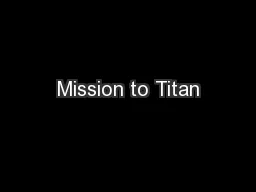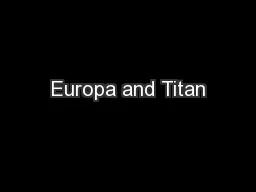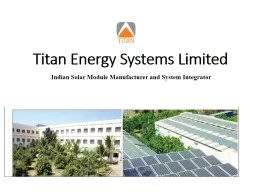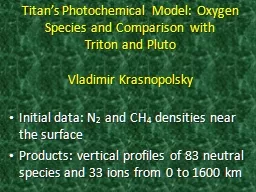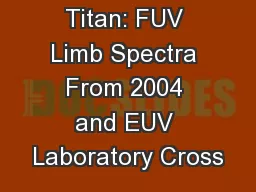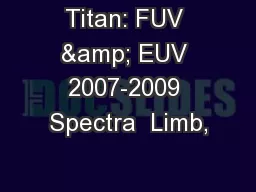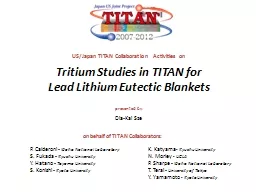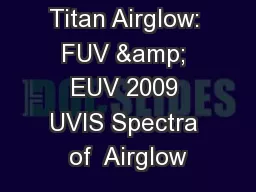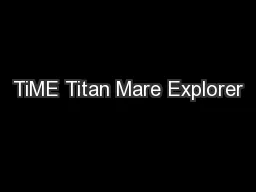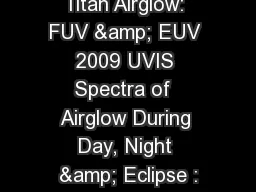PPT-Mission to Titan
Author : min-jolicoeur | Published Date : 2016-05-01
Natalia Alvarez Kelsey Bertamus Michael Morgan Talia Strait Natalie Taylor Bulk Characteristics of Titan Diameter 5150 km Average Density 188 gcm 3 Surface
Presentation Embed Code
Download Presentation
Download Presentation The PPT/PDF document "Mission to Titan" is the property of its rightful owner. Permission is granted to download and print the materials on this website for personal, non-commercial use only, and to display it on your personal computer provided you do not modify the materials and that you retain all copyright notices contained in the materials. By downloading content from our website, you accept the terms of this agreement.
Mission to Titan: Transcript
Download Rules Of Document
"Mission to Titan"The content belongs to its owner. You may download and print it for personal use, without modification, and keep all copyright notices. By downloading, you agree to these terms.
Related Documents

